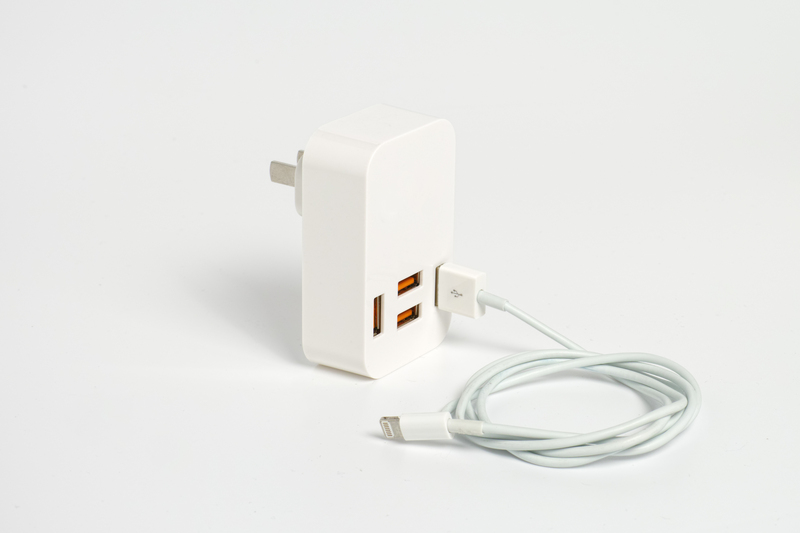Guide to Storing Your Freezer When Out of Service
Posted on 25/06/2025
Comprehensive Guide to Storing Your Freezer When Out of Service
Your freezer plays a vital role in keeping your food fresh and your kitchen running smoothly. But what happens when you need to take it out of service for an extended period? Maybe you're moving, remodeling your kitchen, or simply don't need the freezer right now. No matter the reason, taking the proper steps to store your freezer when out of service is essential to maintain its longevity and efficiency.
In this in-depth guide, we'll cover the best practices for preparing, cleaning, and storing your freezer when it is not in use. Whether you own a chest freezer, an upright model, or a compact unit, following these steps can help you avoid problems like mold, pests, odors, and mechanical issues when it's time to bring the appliance back into service.

Why Proper Storage of Your Out-of-Service Freezer is Important
Storing your freezer incorrectly when it's out of commission can lead to several issues:
- Mold and mildew growth due to trapped moisture inside the compartment.
- Unpleasant odors lingering from leftover food residues.
- Rust and corrosion especially if moisture is present.
- Pest infestation such as rodents or insects seeking shelter or leftover food crumbs.
- Mechanical problems if critical components are stored improperly.
Proper freezer storage when it is out of service preserves the appliance's condition, ensuring it is ready to use when needed again. Plus, you'll save both time and money by minimizing the risk of repairs or replacements.
Step-by-Step Guide to Storing Your Freezer When Unplugged or Not in Use
1. Unplug the Freezer Safely
Begin by unplugging your freezer from the electrical outlet. Always handle the plug--not the cord--to reduce the risk of damage. To be extra safe, turn off the appropriate circuit breaker before unplugging the unit, especially for built-in models.
2. Remove All Contents
This might sound self-evident, but make sure to completely empty your freezer. Dispose of expired or freezer-burned items, and transfer any salvageable food to another cold storage option. Remember to check all drawers, baskets, and shelves for hidden food packaging.
3. Defrost the Freezer
Defrosting is a crucial step in prepping your freezer for storage. Over time, frost and ice build-up can trap moisture and lead to mold growth if left unchecked. Follow these steps for a thorough defrost:
- Open the freezer door or lid and leave it open.
- Place towels or a shallow pan around the base to catch dripping water.
- Allow the ice to melt naturally or speed up the process by placing containers of hot water inside the compartment (do not use sharp objects to chip away at ice).
- Once all the ice is gone, thoroughly wipe down the interior with a dry towel.
4. Clean and Deodorize Thoroughly
Cleaning is essential for preventing bad odors and bacteria growth. For optimal results:
- Mix a solution of baking soda and warm water (about 1-2 tablespoons of baking soda per quart of water).
- Wipe down every interior surface--including shelves and drawers--with this mixture.
- Pay extra attention to corners and rubber door seals where food residue can linger.
- Dry completely with a soft towel.
To further prevent odors, consider placing an open box of baking soda, a charcoal odor absorber, or a few coffee grounds inside the cleaned freezer.
5. Leave the Door or Lid Open
A closed, non-operational freezer becomes a breeding ground for mold and mildew. Keep the door or lid propped open to allow airflow and prevent condensation from accumulating. You can:
- Use a rolled-up towel or a plastic wedge to keep the door slightly ajar.
- For upright models, consider securing the door with bungee cords or rope to ensure it doesn't swing shut accidentally.
If storing the freezer in an area with children or pets, make sure the door cannot be fully closed to prevent entrapment accidents.
6. Clean the Exterior and Back Coils
The outside of the freezer should also be cleaned and dusted. Pay special attention to the back coils (if accessible), as accumulated dust can affect performance once you reactivate the unit. Use a vacuum or soft brush to remove debris.
7. Protect Power Cords and Accessories
Wrap or coil the power cord loosely and secure it with a twist tie or Velcro strap. Store removable baskets and shelves inside the freezer, ensuring they are also clean and dry. If your freezer came with a key or lock, secure it in a safe place.
8. Choose the Right Storage Location
Your freezer's storage environment matters for its long-term health:
- Keep the unit in a dry, well-ventilated location. Avoid damp or humid spaces, as moisture can cause electrical and rust problems.
- Avoid freezing temperatures. Ironically, storing a freezer in unheated garages or sheds in very cold climates can damage components over time.
- Protect from direct sunlight. Excessive heat can warp plastic parts and fade exteriors.
- Ensure there's ample space around the freezer for ventilation.
Preventive Measures for Long-Term Freezer Storage
For extended periods of inactivity (several months or more), consider these preventive actions:
Periodic Checks
Inspect the freezer every month or two to ensure the door remains open, the interior smells fresh, and there are no signs of pests or moisture. Wipe down any dust or condensation as needed.
Moisture Absorbers
Place a few silica gel packets or moisture-absorbing products in the freezer compartment to help control humidity and further reduce the risk of mold or rust.
Rodent and Pest Protection
If storing in a garage, basement, or shed, you may want to take steps to prevent pest infestation. Seal all entry points around the storage area, and consider natural deterrents like peppermint oil-doused cotton balls nearby.
How to Prepare Your Freezer for Reuse After Storage
When it's time to reactivate your freezer, follow these steps:
- Remove any odor absorbers or moisture packs.
- Inspect the interior and exterior for signs of rust, mold, or pests.
- Clean the interior again with a mild solution if needed.
- Check the power cord and plug for signs of damage before reconnecting to electricity.
- Let the freezer run empty for at least a few hours to reach its proper temperature before storing food.
Freezer Storage FAQ
Q: Can I store my freezer outside if it's not in use?
It's not recommended. Outdoor exposure increases the risk of weather-related damage, pest infestation, and temperature extremes that can harm your freezer's components. Always store indoors if possible.
Q: Should I wrap my freezer for storage?
Wrapping your freezer with a breathable cover (such as a cotton sheet) is a good idea to shield it from dust while allowing airflow. Avoid plastic wraps, which trap moisture and encourage mold.
Q: How long can I safely store my freezer unplugged?
With proper cleaning, drying, and ventilation, your freezer can remain unplugged and in storage indefinitely. Regular checks and maintenance will help ensure its continued condition.
Q: Is it okay to lay my freezer on its side or back for storage?
Most manufacturers advise storing your freezer upright to protect the compressor oil and internal components. If you must lay it down for transport or space reasons, let it sit upright for at least 24 hours before plugging it in again.
Top Tips for Efficient Freezer Storage When Out of Service
- Label your appliance with a note such as "Out of Service--Do Not Power" to prevent accidental use.
- Keep maintenance documentation or service records with the freezer for quick reference upon reactivation.
- Store in an accessible location so you can easily carry out periodic checks.
- Share your storage plan with household members or property managers to avoid mishandling.

What to Avoid When Storing Your Freezer Out of Service
- Never leave food or wet items inside the compartment.
- Avoid sealing the appliance in a tight plastic bag or wrap.
- Don't store in flooded, damp, or pest-prone areas.
- Resist the temptation to stack heavy objects on top of the freezer.
Conclusion: Maximizing the Life of Your Freezer During Inactivity
Proper storage strategies are crucial when your freezer is out of service. By cleaning, airing, and protecting your appliance, you'll ensure that it remains in top condition for whenever you need it again. Not only will these practices prevent costly repairs and replacements, but they also safeguard your investment in cold food storage.
Follow our comprehensive guide to storing your freezer when not in use for the best results. When it's time to bring your freezer back online, you'll thank yourself for the extra care taken!
If you found this article helpful, share this guide with friends or family who might benefit from learning how to properly store a freezer when out of service.



